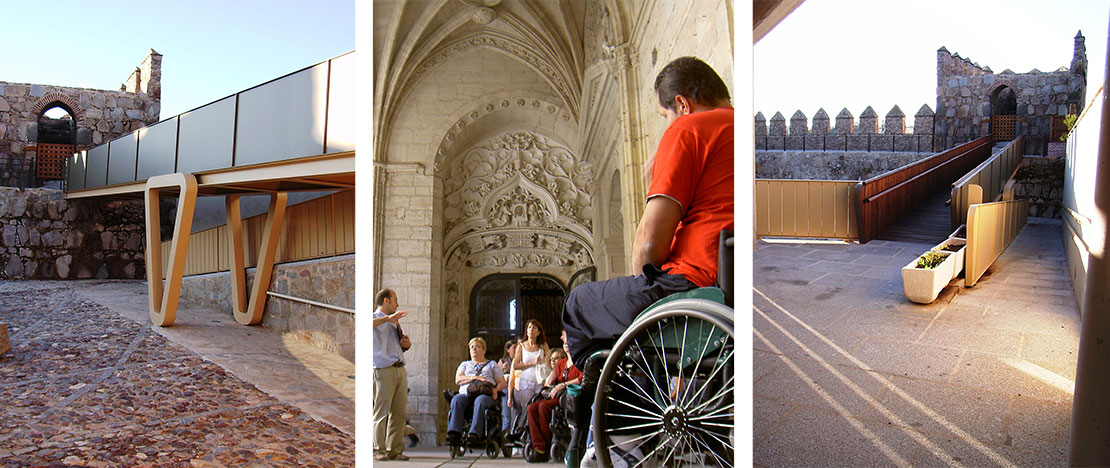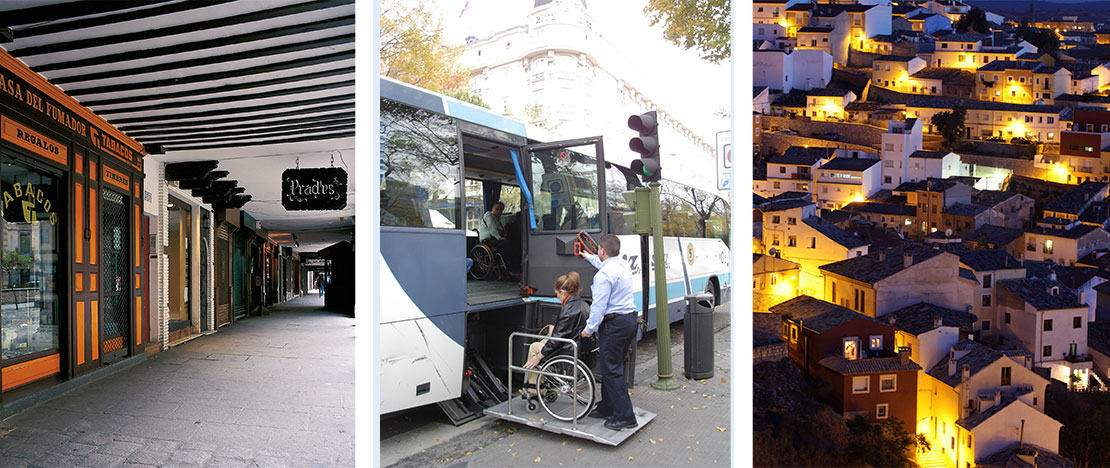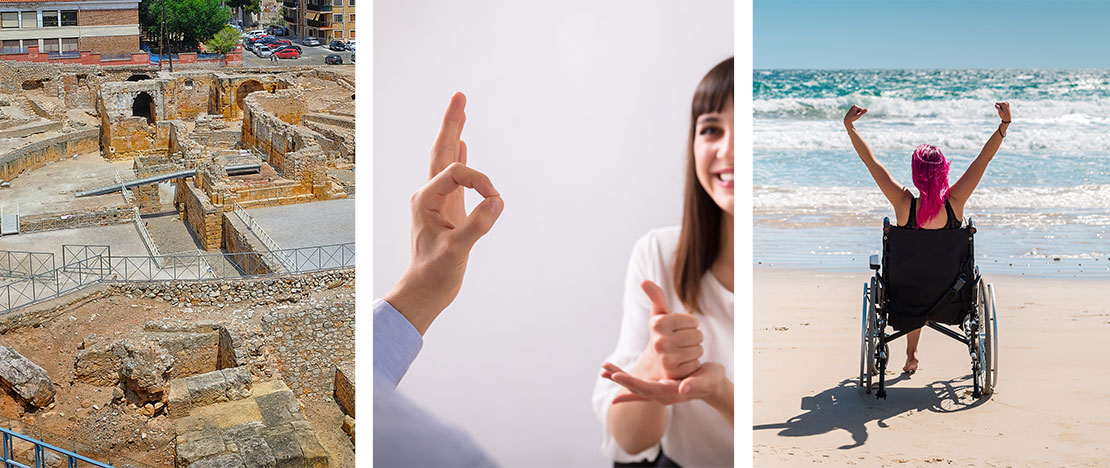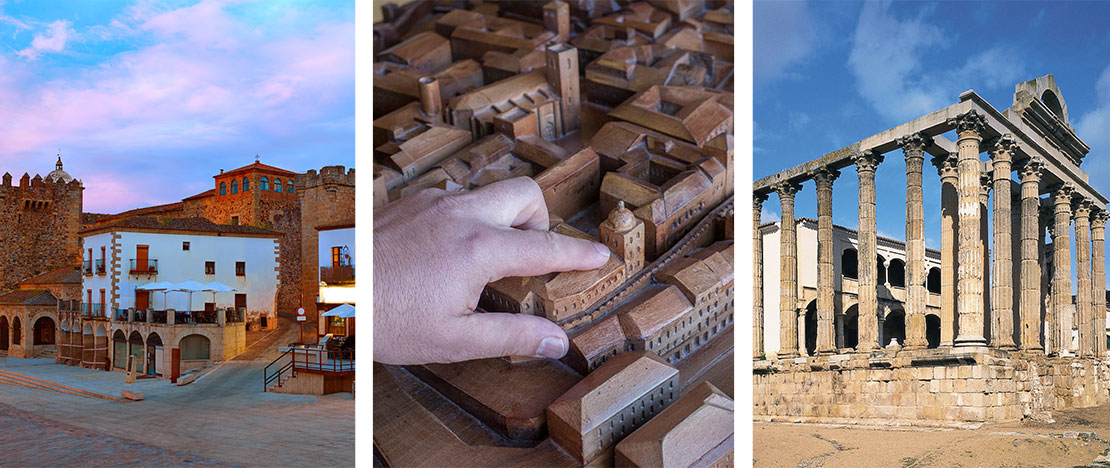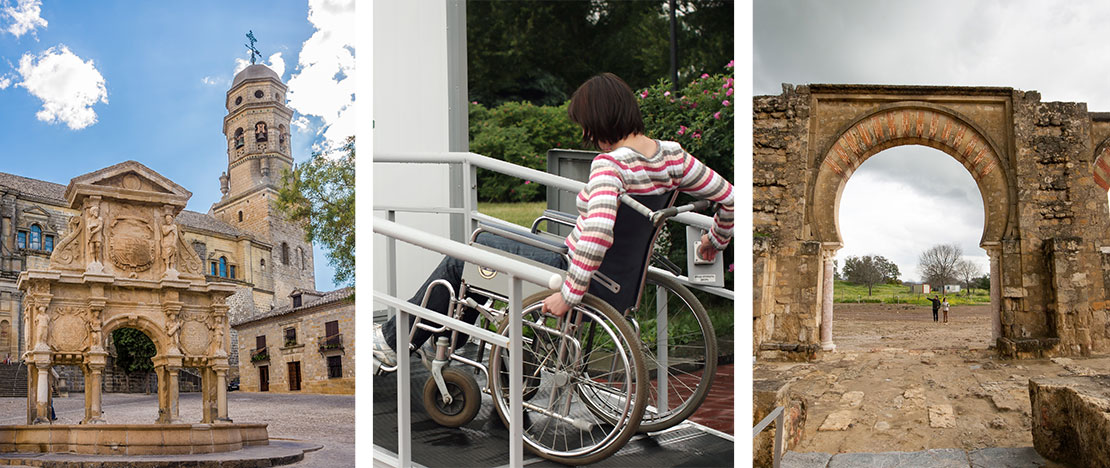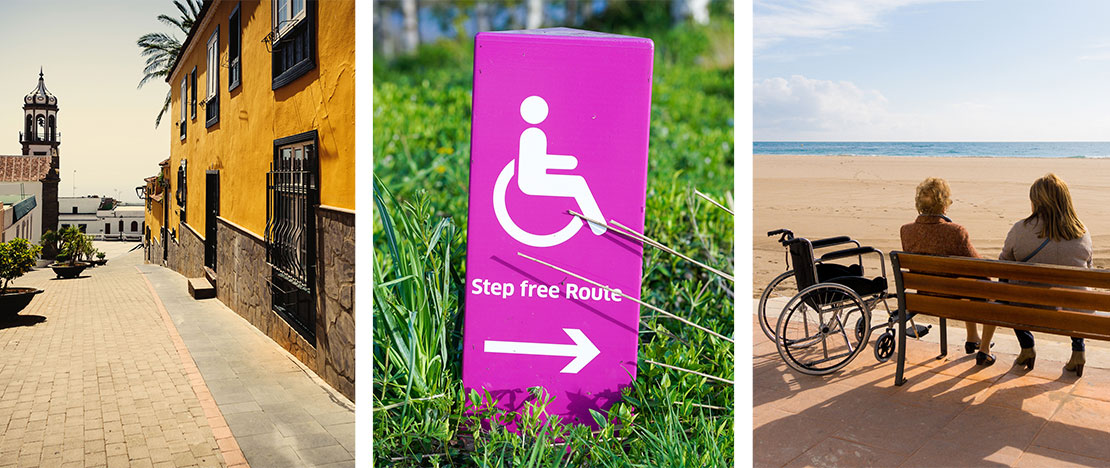
Accessible Tourism in Heritage Cities
Spain is home to 15 World Heritage Cities. Any time is a good time to visit them and get to know their historic centre, squares, monuments and gastronomy. In addition, all of them are committed to accessibility. With this in mind, they are striving to design accessible tourism experiences for everyone to make sure all visitors can fully enjoy their cultural attractions.
Debe activar Javascript para poder utilizar este servicio
-
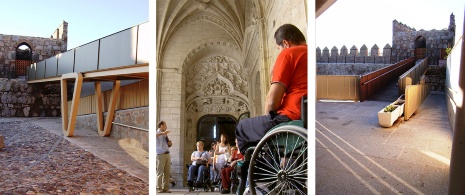
Monuments without barriers
Since its construction in the Middle Ages, the Cathedral in Santiago de Compostela has served as a symbol of the identity of this must-visit destination in Galicia. To discover all it is hiding inside, there is an accessible entrance in Plaza de la Quintana. An alternative that makes it easier to access, as is the case with many other monuments, museums and points of interest, such as the squares of Obradoiro, Platerías, Quintana and Inmaculada.Three historical jewels in Castile and Leon are worth mention for their commitment to accessibility. These cities offer routes for people with disabilities, some of which include signage in braille and QR codes. Salamanca is one of them, where one of these routes takes you on a trip into centuries of history, art and knowledge. Don't miss the Museo de Pintura Medieval de las Claras and the Casa Lis, which are fully accessible. In Ávila, all tourists can visit the city's walls, a living testimony of medieval Spain accessible section Puerta del Puente, equipped with ramps and lift.And Segovia, which can now also be enjoyed from above. There are accessible balloon rides for people with reduced mobility from where you can get a privileged panoramic view of its iconic Roman aqueduct, the Calle Real, the Plaza Mayor or the Alcázar. Flying over a World Heritage City will leave you speechless!
-
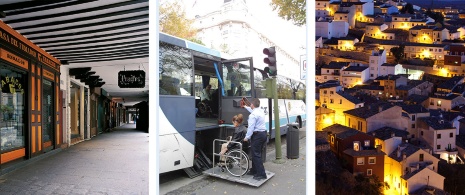
Adapted historic centres
At Alcalá de Henares, the main tourist route is laid out through pedestrian areas paved with homogeneous stone slabs without obstacles, ensuring a comfortable and safe walk. On this tour through the birthplace of Miguel de Cervantes, author of the world famous Don Quixote, make sure not to miss Calle Mayor and Plaza de Los Santos Niños, home to the majestic cathedral.In the magical city of Cuenca, past and present intertwine with its unmistakable Hanging Houses. In recent years, efforts are being made to improve the accessibility of its historic centre with projects such as the installation of escalators and lifts. In Toledo, some of the city's most important monuments such as the Alcázar, the Mosque of Cristo de la Luz or the Puente de Alcántara have accessible entrances and accessible routes, as well as adapted information signs.
-
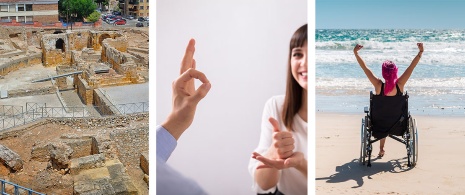
Inclusive Mediterranean
Tarraco, modern-day Tarragona, was the first Roman military base established outside the Italian Peninsula. As part of its drive to become an inclusive city, Tarragona now has a network of accessible beaches including Miracle/ Comandancia, Arrabassada and La Savinosa, among others.On the inspiring island of Ibiza, accessibility efforts are being focussed around two of its hallmarks: The upper town and its labyrinthine white streets. Some traffic lights are now equipped with audible signals and many restaurants offer their menus in Braille, ensuring a more inclusive experience.
-
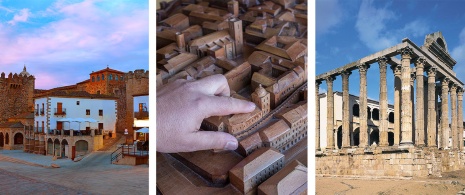
Universal monumentality in Extremadura
To improve the accessibility of its buildings and monuments, Cáceres is promoting itineraries for people with reduced mobility, taking in the Plaza Mayor, Paseo de Cánovas and Parque del Rodeo, in addition to other spaces.Temples, bridges and arches are just a few of the remains of the ancient Roman Empire that you see for yourself today in Mérida. Here the tourist offices have set up a tactile-visual map in relief of this monumentality and other areas of interest so that visually impaired people can find their way around and organise their itinerary.
-
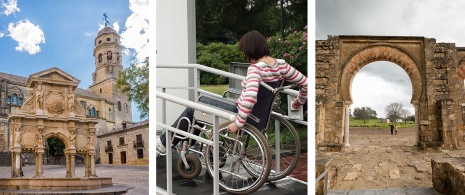
Andalusia, without limits
Úbeda and Baeza are two of Spain's main Renaissance cities. Here, the majesty of its churches and palaces is not at odds with its accessibility, as they have routes that allow you to discover all their charms without limits. In Baeza there is a route, which includes the Palacio de Jabalquinto, the Cathedral, or Plaza de Santa María, while in Úbeda, all tourists can visit the Sacra Capilla or the Hospital de Santiago, as well as other structures.Courtyards lined with flowers, lively squares and, of course, its Mosque-Cathedral are just a few of the attractions that best define Córdoba. Discover its accessible routes where you can also visit other extraordinary places including the Alcázar de los Reyes Cristianos and the baths of the Alcázar Califal or the Medina Azahara complex, approximately 7 kilometres from the city. It will be an exciting tour of civilisations!
-
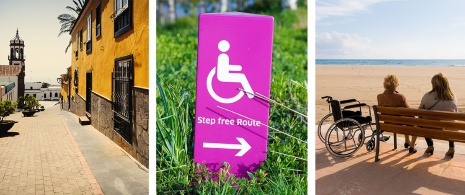
Accessible tramway in San Cristóbal de la Laguna
If you are heading to Tenerife, the city of San Cristóbal de la Laguna, as well as being home to a variety of artistic treasures, prioritises accessibility for people with disabilities in urban spaces and transport.Casa Salazar, the Convent of San Agustín and Plaza del Adelantado are some of the main points of interest. To get around safely, the city centre has acoustic signals at traffic lights and tactile paving to guide the visually impaired, while for longer journeys, the vehicles and stations of the tram network are fully accessible. The La Laguna Inclusiva guide is a comprehensive tool that contains useful resources such as a map where the level of accessibility of each street is detailed by means of a colour code.

